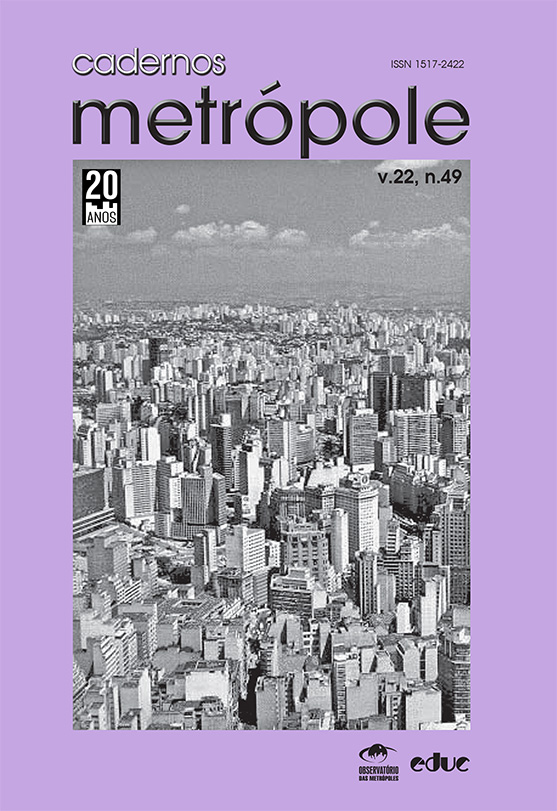Production of socio-spatially segregated neighborhoods: an analysis of the Sapiranga Neighborhood, Fortaleza, Ceará
DOI:
https://doi.org/10.1590/2236-9996.2020-4913Keywords:
socio-spatial segregation, social inequality, city, violence, urban planningAbstract
Socio-spatial segregation is the main Brazilian problem. In the city of Fortaleza, in the Sapiranga neighborhood, this conformation is revealed by the contrast between luxury residences and the invasions that have advanced in their area. The objective of this study was to investigate and understand the action of the agents that produce this space in order to predict possible consequences to the city over time, using the method of bibliographic review and documentary history, as well as data collection and interpretation. It is concluded that the main producers of this segregated space are the State, as the best investments are made in areas targeted at the upper class, the real estate market, which has invested in residenƟ al construcƟ ons that value "cloistering", and the criminal organizations installed in the neighborhood, which restrict people’s circulation in certain places and have deepened the feeling of insecurity.Downloads
Published
2020-08-26
How to Cite
Palmeira, C. R. (2020). Production of socio-spatially segregated neighborhoods: an analysis of the Sapiranga Neighborhood, Fortaleza, Ceará. Cadernos Metrópole, 22(49), 963–981. https://doi.org/10.1590/2236-9996.2020-4913
Issue
Section
Artigos
License
A revista não tem condições de pagar direitos autorais nem de distribuir separatas.
O Instrumento Particular de Autorização e Cessão de Direitos Autorais, datado e assinado pelo(s) autor(es), deve ser transferido no passo 4 da submissão (Transferência de Documentos Suplementares). Em caso de dúvida consulte o Manual de Submissão pelo Autor.
O conteúdo do texto é de responsabilidade do(s) autor(es).


